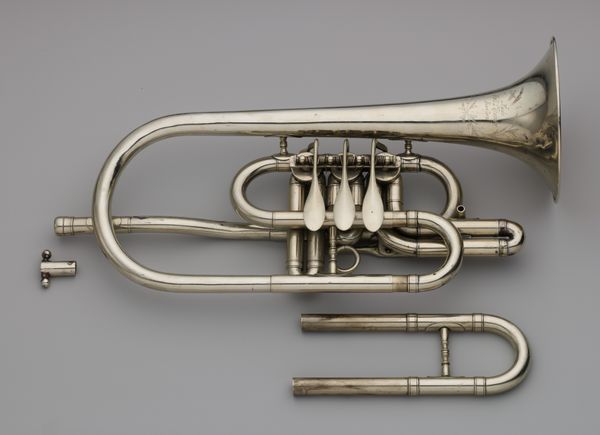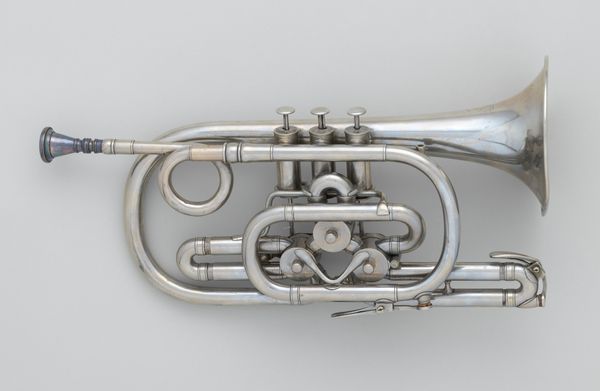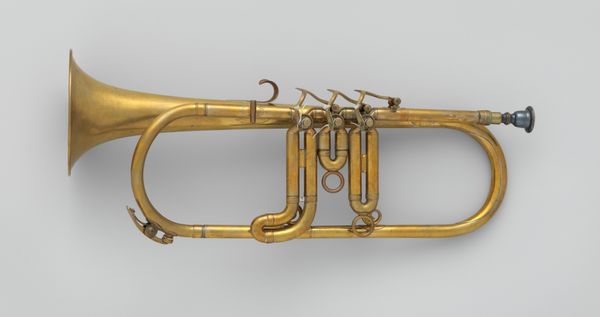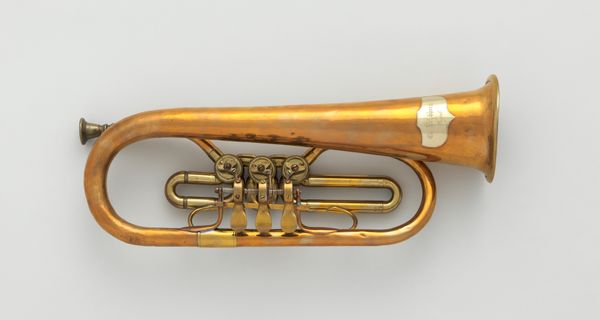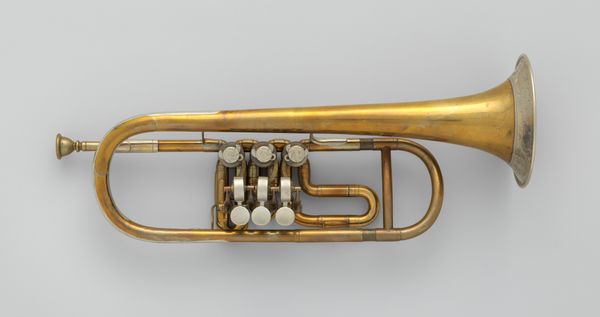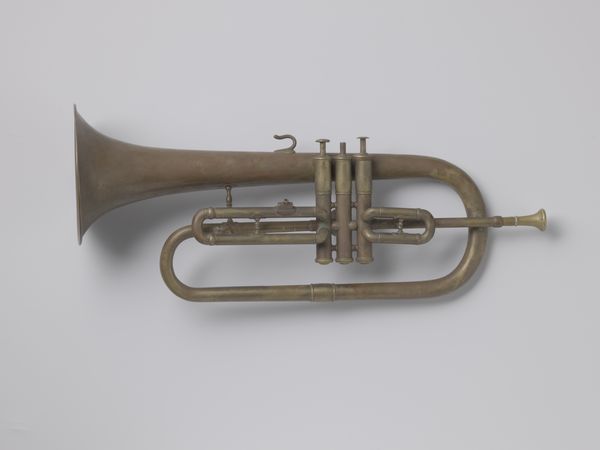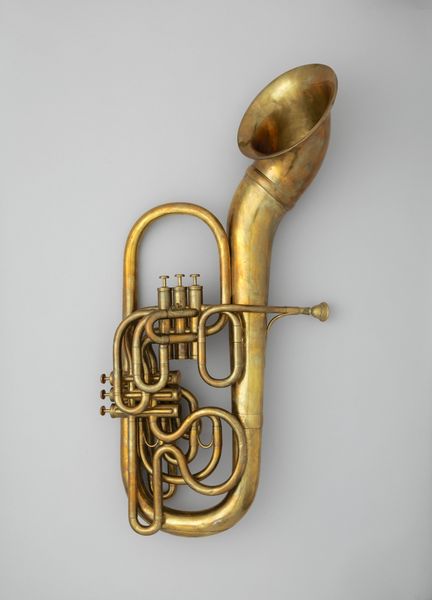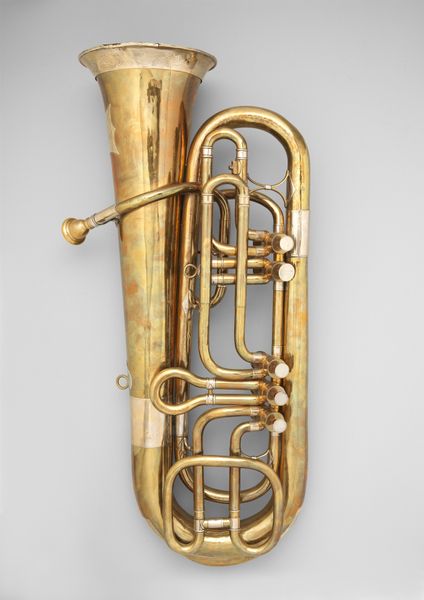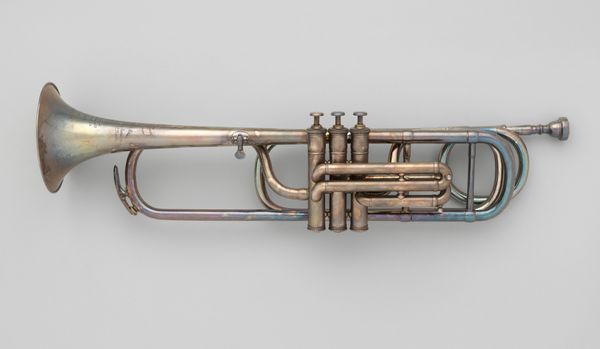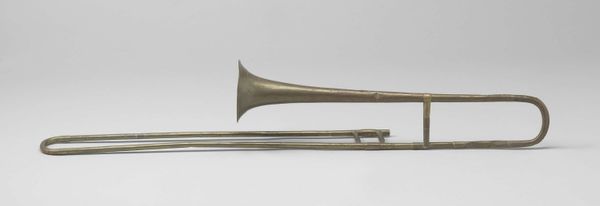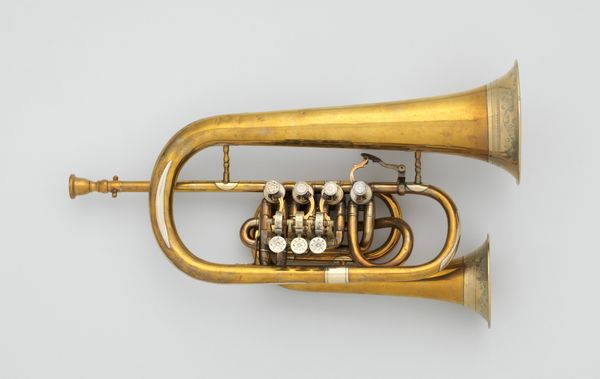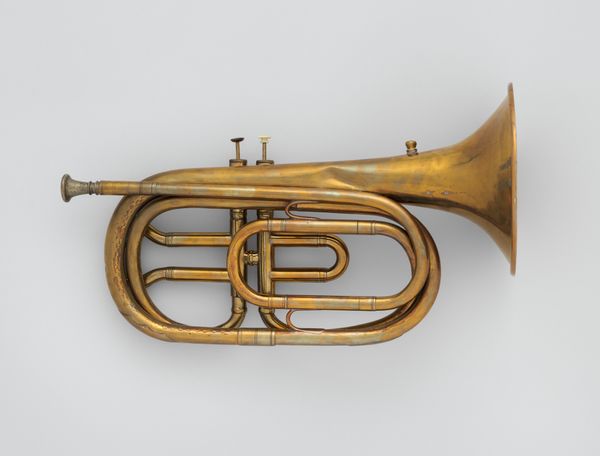
metal
#
metal
#
musical-instrument
Dimensions: 6 3/4 × 4 1/2 × 17 7/16 in. (17.1 × 11.4 × 44.3 cm)
Copyright: Public Domain
Editor: So, this is the keyed bugle in E-flat, dating back to 1840, and it's currently held at the Metropolitan Museum of Art. Made of metal, it’s unexpectedly elegant for a military instrument. What stories do you think it could tell? Curator: Ah, isn’t it a marvel? I imagine this bugle not just as an instrument, but as a silvery throat, once belting out commands across battlefields, maybe even serenading quiet moments between the chaos. It's like holding history in your hands – think of the breath that animated it, the echoes that linger in its curves! Does it spark any particular emotion in you? Editor: It makes me think about the contrast between war and music, the kind of bittersweet beauty that's present in both. The ornate details make it seem more like a ceremonial piece than something strictly functional. Curator: Precisely! It challenges our perceptions. The craftsmanship suggests a deep respect for the instrument, almost as if imbuing it with a spirit. Imagine the artisan, meticulously shaping the metal, pouring not just skill but perhaps hope or even lament into each curve. Do you see the reflection of such emotions in its form? Editor: Now that you mention it, I see the intricacies less as decorative and more as an expression of the artisan's soul, a narrative in metal. Curator: It whispers, doesn’t it? This isn't just about polished metal and precise notes; it’s about humanity trying to harmonize even amid discord. Art always strives to find that melody. Editor: It really changes the way I view it – seeing it not just as a tool, but as a voice with its own story, its own kind of song. Curator: And isn't that the beauty of art, my friend? It teaches us to listen with more than just our ears. Thanks for opening up to that song with me.
Comments
No comments
Be the first to comment and join the conversation on the ultimate creative platform.
